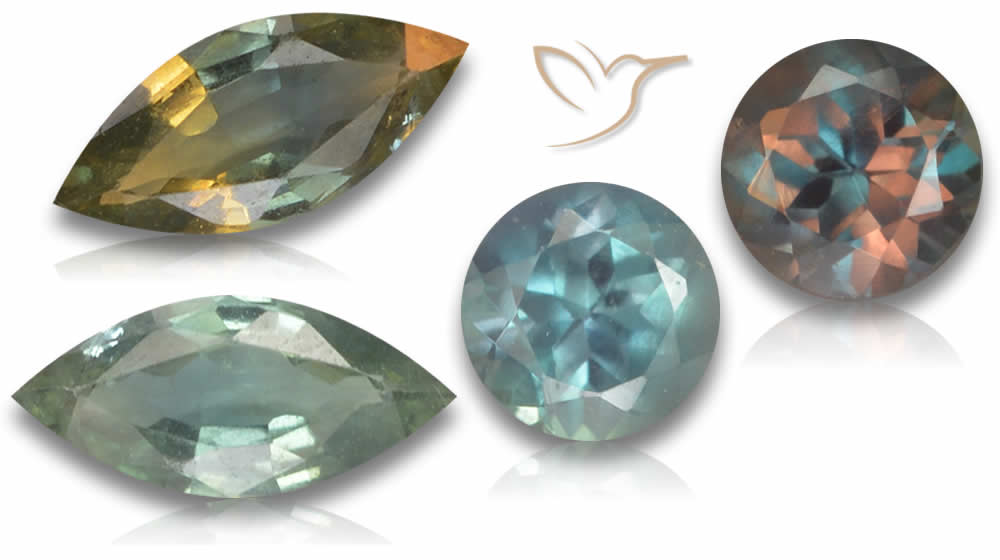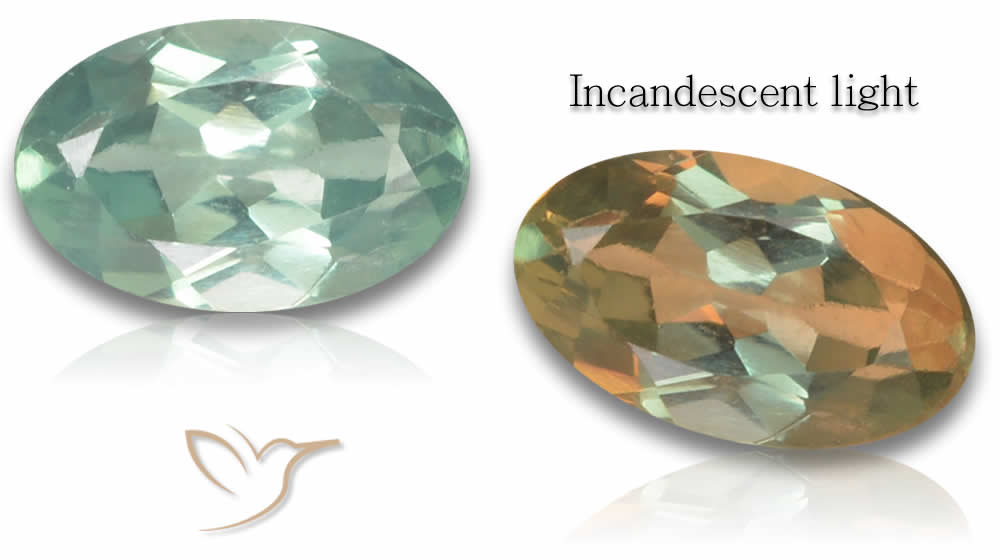Alexandrite Gemstone Information & Buying Guide

Welcome to our in-depth buying guide for Alexandrite gemstones. We'll cover all the essentials about these extraordinary stones, from their standout features to what you should look for when buying one. Alexandrite stands out because of its scarcity and that fascinating shift in color. As you go through this, you'll pick up key details on where they come from, how much they're worth, how to take care of them, their backstory, and ways to wear them in jewelry. Let's dive in - it's quite the gem!
Key Takeaways
- Alexandrite gemstones stand out for their uncommon ability to change color, making them quite valuable.
- People treasure these stones for their looks, toughness, and place in history.
- When you're shopping for an Alexandrite, think about its color, how clear it is, its size, and where it was mined.
- Taking good care of your Alexandrite will help it stay shiny and last a long time - it's worth the effort.
- Alexandrite works well in all sorts of jewelry, offering flexibility and a touch of class.
Alexandrite Gemstone Origin
Alexandrite is a scarce variety of chrysoberyl famous for switching colors. Miners first unearthed these gems in Russia's Ural Mountains back in the 1830s, and they've since turned up in spots like Brazil, Sri Lanka, and Tanzania.
The specific earth conditions that form Alexandrite add to its appeal and worth. These stones emerge from rocks packed with beryllium, aluminum, and silicon that go through intense changes under heat and pressure. That's when elements like chromium and iron sneak in, creating that signature color shift.
Russia still leads as the main source, yielding a limited number of top-notch stones. But some standout Alexandrites have come from Brazil's Minas Gerais region and Sri Lanka's Ratnapura area - pretty impressive finds, right?
Alexandrite Gemstone Origin
| Country | Location | Production |
|---|---|---|
| Russia | Ural Mountains | Small quantity of fine quality stones |
| Brazil | Minas Gerais | Large quantity of high-quality stones |
| Sri Lanka | Ratnapura mines | Small quantity of high-quality stones |
| Tanzania | Merelani Hills | Small quantity of low-quality stones |
Looking at the table, Brazil tops the list in output with plenty of quality stones, while Russia and Sri Lanka follow behind.
Alexandrite Gemstone Color Change
Alexandrite gems are celebrated for their color-shifting trick, thanks to a special mix of minerals. In daylight or similar natural light, they show a bright green. Switch to something like a bulb's glow, and they turn reddish or purplish. This cool effect, called the alexandrite phenomenon, draws in collectors and fans alike.
Chromium in the stone's makeup is the key player here. Depending on the light, those chromium bits soak up varying light levels, flipping the color and giving you that eye-catching show.
Alexandrite Gemstone Color Change Examples
| Light Source | Color Displayed |
|---|---|
| Sunlight | Green to bluish-green |
| Incandescent light | Red to purplish-red |
| Candlelight | Red to orange-red |
| LED light | Green to bluish-green or purple |
If you're thinking about getting an Alexandrite, really get to know this color change - it's what makes it special. Check it out under various lights to see the full magic.
Alexandrite Gemstone Value
Alexandrite gems are prized for being rare, beautiful, and able to change colors. With supply low and interest high, their prices can swing based on several things. Key elements affecting value and price include color strength, clarity, size, and where they were found.
The top-valued ones show a clear green in day light and a deep red or purple under lamps. How strong that change is plays a big role in the price tag.

Clarity matters too - prime stones lack obvious flaws that could cloud them and drop their worth.
Bigger stones tend to be scarcer and cost more, though the evenness of the color shift and the cut's quality can tweak that value.
Origin counts as well; those from Russia's original sites often fetch more due to their history and limited numbers.
When buying, weigh all these to gauge true worth. Stick with trusted sellers and get that authenticity certificate - it's smart protection for your purchase.
Alexandrite Gemstone Care
Good upkeep keeps your Alexandrite shining for years. Stick to these tips to safeguard it and maintain that sparkle:
- Take off Alexandrite jewelry before tough tasks. These stones are sturdy, but hits or scrapes can harm them. Skip wearing it for sports, yard work, or chores.
- Use warm soapy water and a gentle brush for cleaning. Steer clear of ultrasonic or steam methods - they might hurt the stone. Pat dry with a soft fabric.
- Keep it in a soft pouch or wrapped. Store separately to dodge scratches. Don't leave it in direct sun or wild temps, as that could fade or crack it.
- Shield it from strong chemicals. Stuff like bleach, pool water, or makeup can damage or discolor. Remove jewelry around these.
Follow these, and your Alexandrite will stay stunning - who wouldn't want that?
Alexandrite Gemstone History
Alexandrite's story starts in the early 1800s, when emerald diggers found it in Russia's Ural Mountains. Named for the future tsar Alexander II, at first they mistook it for emerald - until it flipped to reddish-purple by candle flame. Quite the surprise!
It caught on fast with royals and the upper class, thanks to that color magic. Dubbed the "tsar's stone," it starred in 19th-century Russian royal pieces.
Today, Alexandrite remains a favorite for its scarcity, beauty, and heritage. It's big in upscale jewelry, especially rings symbolizing uniqueness, good fortune, and affection.
Notable Alexandrite Gemstone Discoveries
| Location | Date | Discovery |
|---|---|---|
| Russian Ural Mountains | 1830 | Alexandrite gemstone discovered by emerald miners |
| Brazil | 1987 | Alexandrite deposit discovered in Minas Gerais |
| Tanzania | 2003 | Large deposit of Alexandrite discovered in the Longido mining district |
Now, you can find Alexandrite in places like Brazil, Madagascar, Sri Lanka, and Tanzania. But real natural ones are still rare and pricey, a great pick for collectors.
"Alexandrite is the most fascinating and enigmatic of all the gemstones, with a tumultuous and interesting history to match its mystical properties."
As we've explored, Alexandrite's past is full of intrigue, keeping it among the world's top gems. Whether collecting or just admiring, it brings style and depth to any set.
Alexandrite Gemstone Jewelry
Alexandrite jewelry highlights the gem's rarity and distinct charm. Whether in a ring, necklace, earrings, or bracelet, it elevates any collection. The color shift shines in different mounts, making it adaptable.
Rings with Alexandrite are hot for engagements, weddings, or just fancy wear. Try a three-stone setup with Alexandrite in the middle, sided by diamonds or other stones - really makes it pop.
Necklaces with Alexandrite pendants or beads offer a refined, enduring vibe.
For earrings, drops that play up the color change under lights are a hit. Studs, hoops, and small hoops also feature Alexandrite nicely.
Bracelets like tennis or charm styles with Alexandrite add polish and flair. Bangles with detailed patterns keep it classic.
Prices for Alexandrite jewelry depend on stone quality, size, and design intricacy. Being rare, it's pricier than many gems.
Choosing Alexandrite for jewelry? Look at design, clarity, cut, and color. With right care, it'll hold its appeal and value over time.
Alexandrite Gemstone Conclusion
Wrapping up, Alexandrite gems are a wonder, with their color tricks, scarcity, and storied past making them treasures.
For buying, check color, clarity, size, and source to nail the value. Proper maintenance keeps them bright and enduring.
These gems fit beautifully in jewelry, from rings to bracelets, bringing elegance to outfits.
We've covered a lot here - hope it helps. Think about adding Alexandrite jewelry to capture its legacy and enjoy its splendor long-term.
Frequently Asked Questions
What is an Alexandrite gemstone?
Alexandrite is a rare and valuable gemstone known for its remarkable color-changing properties. It was first discovered in the 1830s in the Ural Mountains of Russia and is now found in various parts of the world.
How does Alexandrite gemstone change color?
Alexandrite exhibits a fascinating color change phenomenon, where it appears green in daylight or fluorescent lighting and transforms into a reddish-purple hue under incandescent light. This unique ability is due to the presence of chromium in the gemstone's crystal structure.
What are the properties of Alexandrite gemstone?
Alexandrite is a type of chrysoberyl mineral and has a hardness of 8.5 on the Mohs scale, making it a durable gemstone suitable for everyday wear. It has excellent clarity and can exhibit a range of colors, including green, red, purple, and brownish-yellow.
Where does Alexandrite gemstone come from?
The primary source of Alexandrite in the past was the Ural Mountains in Russia. However, today it is also found in countries like Brazil, Sri Lanka, Zimbabwe, and Tanzania. The origin of an Alexandrite gemstone can affect its value and rarity.
How much does an Alexandrite gemstone cost?
The price of an Alexandrite gemstone can vary greatly depending on factors such as carat weight, color, clarity, cut, and origin. Generally, Alexandrite is considered a rare and valuable gemstone, with prices ranging from a few hundred dollars per carat to several thousand dollars per carat for exceptional specimens.
How should I care for my Alexandrite gemstone?
Alexandrite gemstones should be gently cleaned using warm, soapy water and a soft brush. Avoid exposing them to harsh chemicals or ultrasonic cleaners. Store Alexandrite jewelry separately from other gemstones to prevent scratching and protect them from extreme temperatures and direct sunlight.
What is the history of Alexandrite gemstone?
Alexandrite was discovered in Russia in the 1830s and named after the Russian tsar, Alexander II. It quickly gained popularity among the Russian aristocracy. Alexandrite's unique color-changing property fascinated jewelry enthusiasts and became associated with luxury and royalty.
What types of jewelry can incorporate Alexandrite gemstones?
Alexandrite gemstones can be set into various types of jewelry, including rings, necklaces, earrings, and bracelets. Their exceptional color-changing property adds a captivating element to any jewelry design. Alexandrite is often combined with diamonds or other gemstones to create stunning and unique pieces.

